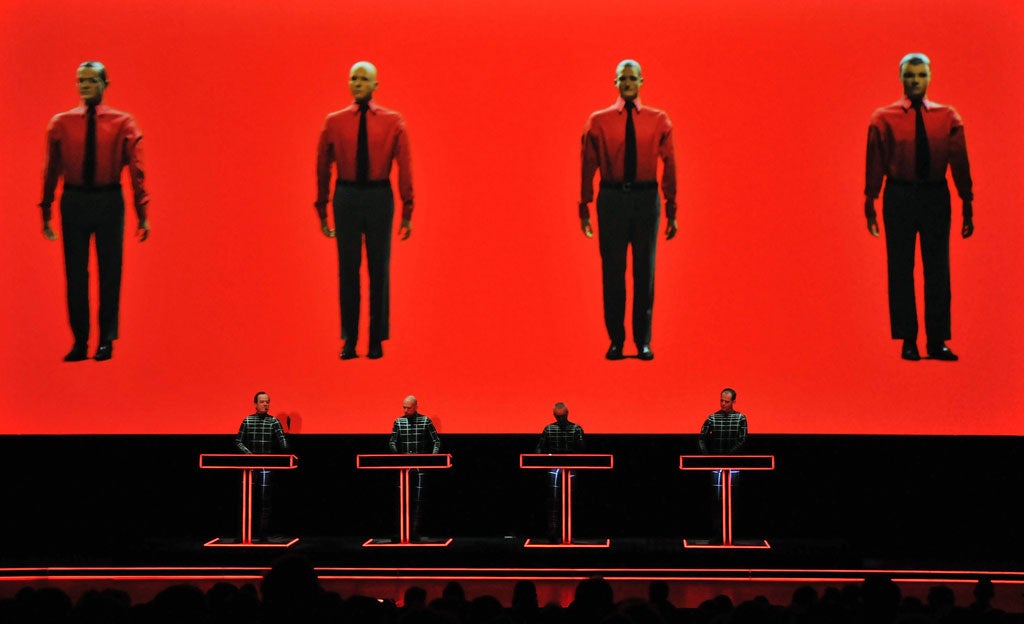2013 - the year in review: In the arts, it was a year of revelations and rediscoveries
Rarely has the creative landscape comprised such a colourful mixture of past and present. Alice Jones looks back on 12 months of astonishingly timeless artistic vibrancy

Selfie, as we all know by now, is the word of 2013. You could make a case for it being the word of the year in arts, too. This was the year when Instagram had its own exhibition of artfully filtered portraits at the National Portrait Gallery; Arcade Fire released an interactive video, Reflektor, which allowed fans to insert their own faces into it; literature’s most self-obsessed heroine, Bridget Jones, bared her soul, social-media profiles and vital statistics to the world once again; and everyone did the Harlem Shake.
For other cultural touchstones of 2013, see twerking, Breaking Bad, “Blurred Lines” and The Great British Bake Off. All of them almost as ubiquitous as Benedict Cumberbatch, Pharrell and Russell Brand, who went for maximum exposure this year, and got it. More was more across the arts, from Eleanor Catton’s 832-page Booker winner, The Luminaries, to Donna Tartt’s long-awaited, and very long, 784-page The Goldfinch. Films such as Blue Is the Warmest Colour and The Hobbit 2 scoffed in the face of the three-hour mark. When Lars von Trier screened Nymphomaniac to the press last month, it was so epic they had to break for tea and biscuits halfway through. Pharrell (him again) made a music video for “Happy” that lasted 24 hours.
In 2013, as in every year, there were delights – Chimerica, Grayson Perry’s Reith Lectures, Philomena, Pompeii at the British Museum, The Book of Mormon, Bridget Christie’s comedy, Broadchurch, Rory Kinnear in everything. There were disappointments – The Great Gatsby in needless 3D, a new musical Charlie and the Chocolate Factory, Haim singing for David Cameron, Richard Curtis’s latest, that third series of Homeland. And there were disagreements – Miley Cyrus vs Sinead O’Connor, JK Rowling vs the man who told the world she was Robert Galbraith, the Bolshoi vs itself.
Looking back over 2013, one cultural trend stands out. This was the year of the comeback. Of Daft Punk and Monty Python. Of Bridget Jones and Francis Urquhart. Of Morrissey and Lowry. Even of Woody Allen, who never really went away, but who was considered definitively, finally to have made a return to form with Blue Jasmine (with the proviso that it was still nowhere near as good as Annie Hall).
Rediscovery and reappraisal were all around. You could call it the Stoner effect. John Williams’s slim novel from 1965 about an average American academic started the year as a forgotten classic and ended it as Waterstones’ Book of the Year. How it got there is a very 2013 story of the cult of vintage, novelty and internet hype. After almost 40 years out of print, a reissue, word of mouth and a tweet from Bret Easton Ellis rocketed it up the charts.
In a year characterised by nostalgia and the rush to find the next old thing, Lowry was given his first retrospective at Tate Britain, and attracted blockbuster visitor numbers. Steven Soderbergh resurrected Liberace to fabulous effect in Behind the Candelabra. As the year ends, Theatreland is obsessed with the Profumo affair, a political scandal that happened 50 years ago. And when Netflix set out its stall to change the way we watch television, it did so with a remake of the 1990 series House of Cards.
Oldies, generally, were golden, from The Rolling Stones triumphantly headlining Glastonbury at a combined age of 276, to Kraftwerk playing the Tate and Latitude and Fleetwood Mac touring arenas as if the past two decades had never happened. Daft Punk released their first studio album in eight years, and had the hype campaign and song of the year in “Get Lucky”, even if Random Access Memories never quite lived up to either. Breaking news of the return of both Justin Timberlake and Destiny’s Child on one day in January almost melted the internet. Lily Allen came out of retirement to make a song about sexism and an advert for John Lewis.
The biggest reunion of the year was one that has not really happened yet. Monty Python made global headlines when they announced they would be performing live for the first time in 40 years in 2014. Whether they will be any good is yet to be seen but having sold out 10 nights at the O2 in minutes, it is already a success of sorts. It is certainly possible to make an old joke funny again, as Alan Partridge’s summer blockbuster, Alpha Papa, and David Brent’s new live tour proved.
One comeback surprised and delighted more than any other in 2013. David Bowie emerged overnight with The Next Day, his first studio album in a decade. From the self-effacing selfie on the cover, to videos featuring Tilda Swinton and remixes from James Murphy and its seamless journey from secret to social media’s favourite topic, this was a quintessentially 2013 album. Beyoncé has already copied Bowie by releasing her own “surprise” album this month. More will follow. It goes to show that not all comebacks are about looking back.
Subscribe to Independent Premium to bookmark this article
Want to bookmark your favourite articles and stories to read or reference later? Start your Independent Premium subscription today.

Join our commenting forum
Join thought-provoking conversations, follow other Independent readers and see their replies